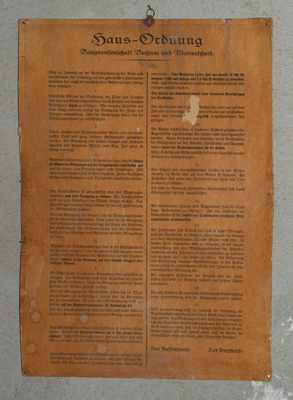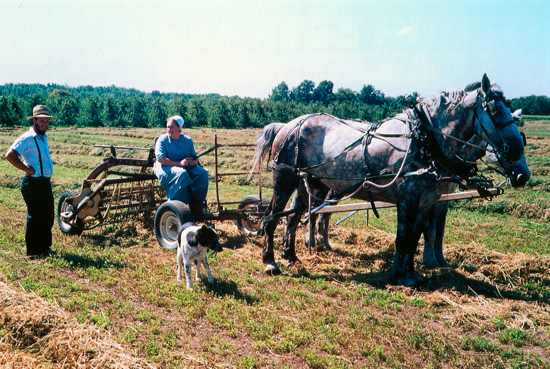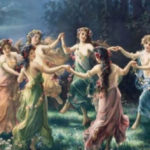 Technology
Technology  Technology
Technology  Humans
Humans 10 Everyday Human Behaviors That Are Actually Survival Instincts
 Animals
Animals 10 Animals That Humiliated and Harmed Historical Leaders
 History
History 10 Most Influential Protests in Modern History
 Creepy
Creepy 10 More Representations of Death from Myth, Legend, and Folktale
 Technology
Technology 10 Scientific Breakthroughs of 2025 That’ll Change Everything
 Our World
Our World 10 Ways Icelandic Culture Makes Other Countries Look Boring
 Misconceptions
Misconceptions 10 Common Misconceptions About the Victorian Era
 Mysteries
Mysteries 10 Strange Unexplained Mysteries of 2025
 Miscellaneous
Miscellaneous 10 of History’s Most Bell-Ringing Finishing Moves
 Technology
Technology Top 10 Everyday Tech Buzzwords That Hide a Darker Past
 Humans
Humans 10 Everyday Human Behaviors That Are Actually Survival Instincts
 Animals
Animals 10 Animals That Humiliated and Harmed Historical Leaders
Who's Behind Listverse?

Jamie Frater
Head Editor
Jamie founded Listverse due to an insatiable desire to share fascinating, obscure, and bizarre facts. He has been a guest speaker on numerous national radio and television stations and is a five time published author.
More About Us History
History 10 Most Influential Protests in Modern History
 Creepy
Creepy 10 More Representations of Death from Myth, Legend, and Folktale
 Technology
Technology 10 Scientific Breakthroughs of 2025 That’ll Change Everything
 Our World
Our World 10 Ways Icelandic Culture Makes Other Countries Look Boring
 Misconceptions
Misconceptions 10 Common Misconceptions About the Victorian Era
 Mysteries
Mysteries 10 Strange Unexplained Mysteries of 2025
 Miscellaneous
Miscellaneous 10 of History’s Most Bell-Ringing Finishing Moves
10 Things You Probably Don’t Know About The Amish
The Amish church started as a breakaway from the Annabaptists (adult baptizers) in Switzerland in 1693, led by Jakob Ammann. They are very distinctive due to their simplicity of dress and lifestyle and their shunning of modern technology – preferring to drive in horse-drawn buggies than cars. This list looks at ten aspects of the Amish people.

Bundling is the rather odd practice of a young courting couple being bound in two separate blankets and laid together on a bed for intimacy that does not involve sexual contact. The practice has died out in most of the world (it was practiced by some non-Amish too) but in the Pennsylvania Amish communities it is still to be found. In some cases in the past (though perhaps not now) the girl was tied into a sack and her potential husband would lie in bed with her. In modern times it is also not uncommon to see a bundling bed – a bed with a board in the middle to prevent touching.

The Ordnung (order) is the set of rules for each Amish community. It contains both religious and civil rules. Because the Amish believe in a strictly literal interpretation of the Bible these rules are created in order to keep their members in line with the laws therein. Amish communities are not centrally governed so each group comes up with their own version of the rule. There are two types of Ordnung – those determined in the early history of the religion by conferences (these are usually written down rules) and those passed verbally within each group. The rules are mostly derived from the Bible but those which aren’t are justified by the fact that they will cause a person to ultimately become worldly and thus breach the Biblical laws.

The Amish believe in living a life separated from the non-Amish. They quote the Bible to justify this belief: “Be not unequally yoked with unbelievers. For what do righteousness and wickedness have in common? Or what fellowship can light have with darkness?” (II Corinthians 6:14). Each community has one Bishop, two ministers and a deacon all of whom are male. Rather than worshiping in a church, the Amish takes turns holding their services in the homes of the community members – with houses being built especially to accommodate large numbers of people. Funerals are held in the home of the dead and coffins are plain – hand made by the community. Graves are dug by hand because the Amish believe that modern technology is a hindrance to family life – as a result they shun electricity and machinery. In some cases, however, electricity is permitted to warm homes. This electricity is supplied by the community itself via simple devices such as windmills. Because of their other religious convictions, the Amish take no government benefits (and most don’t have medical insurance) and they do not serve in the military.

Belts, gloves, ties, sneakers: banned! The Amish have a very simplistic dress style – in keeping with their overall life philosophy. Their clothes are handmade and are usually of a dark fabric. Coats and vests are fastened with hooks and eyes but shirts have buttons (it is a myth that the Amish shun buttons). Men’s trousers must not have creases or cuffs. Married men must grow their beards whilst mustaches are forbidden. Amish women cannot wear patterned clothing or jewelry and they are not permitted to cut their hair. The length of clothing, like dresses, is strictly governed by the Ordnung of the community.

Not all the Amish are the same – as in most protestant religions there are divisions within the group, each following their own variations on the rules. The reasons for these divisions are, as usual, over matters of doctrinal disagreement. There are eight distinct divisions within the Amish as a whole with the most conservative “Old Order” having split in the 1860s. Sometimes the divisions can be over very trivial matters – for example the Troyer Amish split over a dispute about hat brims. These differences in beliefs can often lead to bizarre forms of violence.

Because men must grow their beards unrestricted and women their hair, it makes those two things prime targets for violence within or amongst differing Amish communities. The attacks involve cutting off the hair of beard of the person to be punished. This is not a lawful form of punishment in the Amish and even though the person being punished may not be guilty of anything in the eyes of his own community, the loss of hair causes great shame and shunning (not the excommunication type – just the social embarrassment type). Most recently an Amish sect leader Samuel Mullet (above) coerced 15 of his followers to attack other Amish communities in this way. They were found guilty of the crimes and are facing 15 years in jail each for violation of hate crime laws. They will be sentenced in January 2013.

Because most Amish descend from the families of the 200 founders from the 18th century, they have a much higher rate of genetic disorders due to inbreeding – such as “maple syrup urine disease.” They also have a high infant mortality rate, but this does not phase them. These disorders and childhood deaths are seen by the Amish as “Gottes Wille” (God’s will). They refuse to undertake any form of genetic testing prior to marriage which would ensure that they were sufficiently unrelated to their potential spouse.

If you are one of the lucky Amish who hasn’t been born with a genetic mutation or disease (and you actually survived childbirth) – you have the benefit of reduced rates of cancer which may be attributed to their distinctive garb which includes head coverings. It is also likely that their healthy lifestyle (which includes very little alcohol or tobacco) is a contributing factor. Furthermore, the Amish have suicide rates that are far lower (one third) the rate of non-religious people and 50% lower than other religious people.

Rumspringa or “the Amish get out of jail free” card is the Amish term for adolescence. During this time young adults are most likely to be rebellious against their community and consequently they are treated more leniently so as to not push the youths away. At the conclusion of rumspringa the youth is expected to choose whether he wishes to stay with the community or leave it. If he stays he is baptized and then held to a much higher behavioral standard. Adults who do not behave in a manner deemed fitting by the group are shunned. Most youths who undergo this process opt to stay with the Amish.

Meidung (shunning) is the Amish form of excommunication. It is usually inflicted for breaches of the Ordnung or for other “crimes” such as marrying outside the faith. When an individual is shunned they are expelled from the community and all ties are cut. This means that a shunned member cannot have any contact at all with other members of the group including his immediate family or friends. Needless to say this is the most serious punishment available to the Amish. Meidung lasts until death unless one repents one’s crime before the community.








